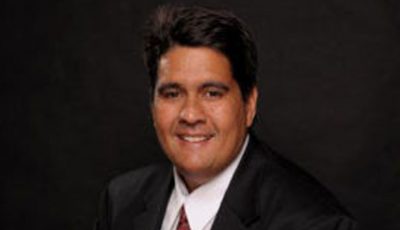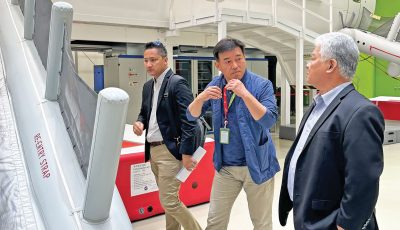Nippon, Nihon, Hapon – Japan
It might not have been Tenno Jimmu who kicked the first dirt off Kyuden some 2,600 years ago, but Imperial Japan has had an unbroken family line ever since. My name in Zhongguo is Liu Ji Mu, so I feel a close affinity to Jimmu, the starter of Nippon’s imperial heritage.
Liu jia (Liu family) is my relation in China by marriage and to demonstrate the contemporary notion that identity is a matter of choice rather than as a kneejerk patriarchal privilege, I named myself by her household. Zhimu is the closest I come to for Spanish Jaime, or English James, (sounds like Zhang Yimou, the movie director) but a family member conferred Ji Mu. My calling card bears that name.
I was on Saipan when Emperor Akihito and Empress Michiko visited 10 years ago. Shorn of the pomp and circumstance of a state visit, it was a memorable one. A couple of articles I wrote were thought to be “different” (Radio Australia) compared to the standard coverage.
At 71 and 70, the two immaculately attired but ordinary looking visitors paused for moments of silences at locations where people died during the ferocious Battle of Saipan. Akihito and Michiko were pictures of decorum, honor, and good graces that “fell from the sea” sans Yukio Mishima’s sense of glory in death. In fact, the imperials came to honor ALL the dead and prayed for world peace.
In post-WWII Pea Eye, the Tenno Showa (Hirohito) and the “Nips” were “evil.” Atrocities committed in the Philippines were regularly rehearsed. A bottle buyer in Davao turned out to be a military officer, adding to the deception theme of the attack on Pearl Harbor.
My immediate family was not a rabid Nippon hater. My father by profession was an agent of compassion and reconciliation rather than hatred and discord. After he returned from five years of graduate studies in the United States, he bought me a bottle of San Mig (he was a good father in spite of being a Methodist teetotaler) and told me the story of how a lieutenant of the Imperial Army warned him that his name was in the Kempetai list and should skip town, pronto. At the time, I was but a little lizard slithering up my mother’s womb.
I discovered that American-led guerrillas in the middle of town quartered my “collaborator” uncle, a teacher who translated for Japanese officials. My nationalism conditioned as anti-Japanese took a deep dip down murky waters.
Attending ecumenical functions with Nihon young people present made me realize they were ordinary human beings, hardly the ogres of popular biases. Inviting one to my home in Northern Luzon after a conference in Dumaguete’s Silliman U in the south a good 20 years after Yamashita was hanged in Manila, the depth of racial prejudice was still fresh as stone rained on our house’s roof at midnight.
Later, I visited Yokohama (its wharf and Chinatown) and Tokyo (dined in Ginza at the first rotating restaurant and walked down the university town of Shinjuku before I knew there was a red district in the area) in the late ’60s, went down to Osaka Banbaku Expo ’70, and trekked up to Sapporo on Hokkaido in 2002 on the Shinkansen for a weeklong brooding before attending to a speaking engagement in West Tokyo, so I got comfortable saying domo arigato gozaimashita! Stops at Narita these days make one feel one is still in L. A.!
When the Saipan Japanese Consulate invited a number of participants to their two-hour program at their office in Lower Base, I beat the path to the front of the line. I sharpened my konnichiwa, o genki desu ka?
The name Nippon or Nihon, the “land of the rising sun” has been used longer than the English “Japan,” the latter derived from the Portuguese appropriation of the Hokkien Jit-pun, Zeppen in Shanghai, Jet pun in Guangdong, adopted by the Thais as Yipun, Jepun to the Malay, Jepang in Indonesian, and Hapon in Pilipino. China calls the country Riben in Mandarin (pronounced ir ben), not too distant from the Hanggul Ilbon. In the archipelago, people’s heart opens with the freshness of the early morn sun, notwithstanding the intrusive Commodore M.C. Perry and the reforming Meiji dynasty! Wakarimasu ka?
At Lower Base Thursday afternoon, we were feted the Nihon touch, with green tea first (“very hot,” Yasuko Kobayashi said in perfect English), then went through a session of folding three origami of “a crab, a polo shirt and a bird” with Noriko Muña. My dexterity at 70 did not come easy. Then we were treated to an introspective experience of the movie Nitaboh of itinerant blind shamisen musicians at the onset of the Meiji reforms. Unobtrusively, Consul Hitoshi Kikuchi diplomatically managed from a distance.
No attempt at articulating “meaning and significance” was attempted in the two-hour session. Quietly Zen, we experienced tea, origami, and the movie, with an understated welcome for our presence and attendance, Yasuko making sure she had first names pat at every introduction of an arrival. I suggest the Consulate and staff hold more events of this nature.
(All Japanese words are pure pretense on my part. Please ignore.) Yoi ichinichi o. Sayōnara.



























